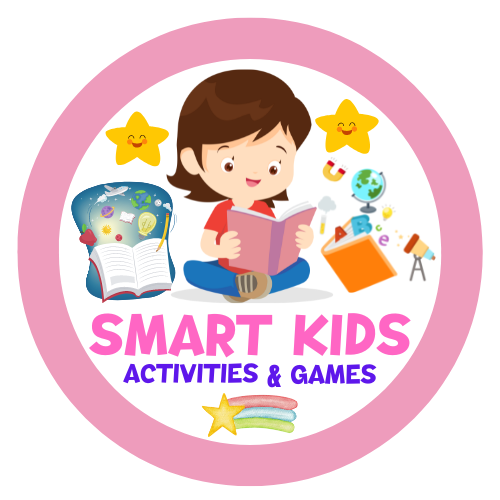Debunking 10 Powerful Myths: The Truth About Differentiated Instruction
Welcome to our exploration of the fascinating world of differentiated instruction! This teaching approach has gained popularity in recent years, but with that comes a fair share of myths and misconceptions. Today, we’re here to debunk ten common myths surrounding differentiated instruction and shed light on its value in education.

Myth 1: Differentiated Instruction is Too Time-Consuming
Practical Example: Imagine a dedicated math teacher, Ms. Anderson. She faces a classroom filled with students of varying math abilities. Instead of delivering the same lesson to everyone, Ms. Anderson decides to differentiate her instruction.
For students who need extra support, she provides additional practice problems and offers one-on-one help during class. Those progressing at a regular pace receive standard assignments. Advanced students, however, are challenged with more complex problems.
Initially, it might seem like this approach requires extra time and effort. But, in reality, by addressing each student’s needs, Ms. Anderson reduces the need for re-teaching, making her lessons more efficient in the long run.
5 Essential Tips for Effective Classroom Management Success
Myth 2: It’s Only for Gifted or Struggling Students
Practical Example: In an English language arts class, Ms. Roberts is introducing a unit on poetry analysis. Rather than assuming every student is at the same level, she chooses a range of poems for analysis.
Gifted students delve into complex works by poets like Langston Hughes, while those struggling with the material start with simpler poems. As the unit progresses, Ms. Roberts gradually increases the complexity of the poems assigned to each group. This approach ensures every student is challenged at their own level, fostering growth for all.
Myth 3: It Requires Creating Individual Lesson Plans
Practical Example: Let’s follow a history teacher, Mr. Patel, who’s teaching a unit on the American Revolution. Instead of creating entirely separate lesson plans for each student, Mr. Patel provides various resources to accommodate different learning styles and paces.
Visual learners receive maps and charts to help them visualize key events, auditory learners listen to historical speeches, and kinesthetic learners participate in reenactments. While it’s not individualized lesson plans, it’s tailoring resources to cater to diverse learning preferences.

Myth 4: It’s Only for Certain Subjects
Practical Example: Differentiated instruction isn’t confined to particular subjects. Take Mr. Rodriguez, a science teacher, for instance. He’s covering the topic of ecosystems.
Instead of assuming that differentiating instruction is irrelevant to science, he incorporates it creatively. English-focused students read articles about environmental issues, math enthusiasts calculate population statistics, and artistic students create intricate ecosystem dioramas. This illustrates that differentiation can be applied across subject areas.
Mastering Effective Teaching Strategies: 10 Proven Techniques
Myth 5: Differentiated Instruction Means Chaos in the Classroom
Practical Example: Picture a bustling elementary classroom, led by Mrs. Lewis. She embraces differentiated instruction for a writing assignment, dividing the class into groups, each working on a different writing project.
At first glance, it might seem chaotic, but Mrs. Lewis has established clear guidelines and routines for group work. The classroom hums with focused energy as students collaborate on their unique projects without disrupting others.
Myth 6: It’s All About Ability Grouping
Practical Example: High school social studies teacher, Mr. Carter, is teaching a unit on ancient civilizations. Instead of relying on ability grouping, he assigns roles to students based on their strengths.
Some students become researchers, others create visual presentations, and some focus on delivering oral presentations. This approach encourages collaboration, highlighting that differentiation is not about segregating students but harnessing their diverse skills for a common goal.
Myth 7: It Doesn’t Work for Large Classes
Practical Example: In a lecture-style college course with a sizable enrollment, Professor Ramirez implements differentiated instruction.
She incorporates online discussion boards, where students engage in deeper discussions about the material. This offers individual voices a platform to be heard, even in a large class. Additionally, Professor Ramirez holds optional review sessions and offers various study resources to cater to diverse learning needs within the large student population.
Unleash the Power of Active Learning: 5 Effective Strategies for Transforming Your Classroom
Myth 8: Only Experienced Teachers Can Use It Effectively
Practical Example: A fresh graduate, Ms. Turner, starts her first year as an elementary school teacher. While she may lack years of experience, she attends professional development workshops on differentiated instruction.
Equipped with strategies like tiered assignments and flexible grouping, Ms. Turner successfully adapts lessons to meet the diverse needs of her students. This illustrates that differentiation is not exclusive to experienced educators.

Myth 9: Differentiated Instruction is Expensive
Practical Example: Let’s look at a school with limited resources that wishes to implement differentiated instruction.
To dispel the myth of high costs, they utilize free online resources, open educational materials, and collaborative lesson planning among teachers. By sharing materials and strategies, they successfully implement differentiated instruction without a significant financial burden.
Myth 10: It’s Just Another Education Trend
Practical Example: Differentiated instruction has been a consistent and effective pedagogical approach for decades. Its enduring presence in education reflects its proven success. Teachers continue to see improved student engagement and outcomes, making it clear that differentiated instruction is not just a passing trend but a valuable tool for educators.
Conclusion
In conclusion, these practical examples help debunk the common myths surrounding differentiated instruction. By addressing diverse student needs, this approach fosters inclusivity, enhances learning outcomes, and helps students reach their full potential. As educators, it’s crucial to embrace this powerful tool for the benefit of our students and the future of education. Differentiated instruction isn’t a myth; it’s a reality that can transform education for the better.
Download free activities and teaching resources Click Here


